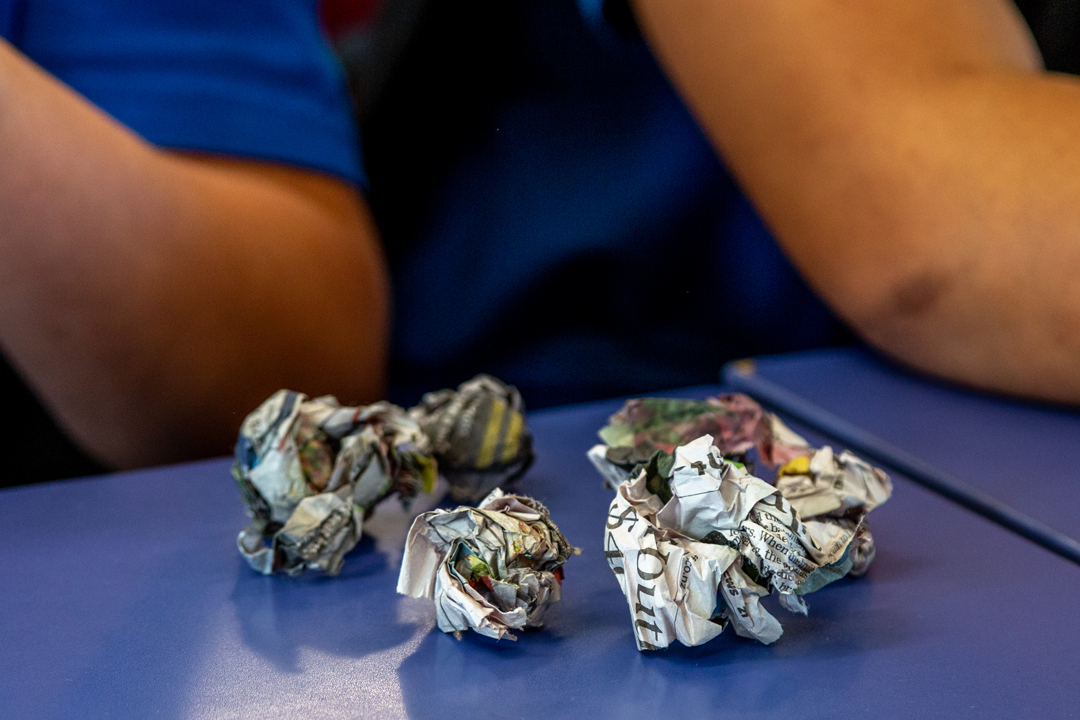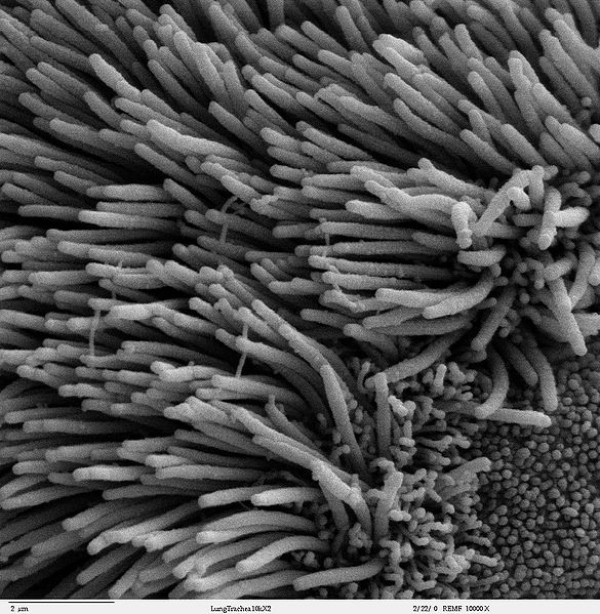Small air pollution particles can get into our lungs and even our bloodstream. This lesson explores what happens to the air we breathe in.
On this page:
- Introduction
- Key summary points
- Activity: Silly cilia
- Quiz: The air in our lungs
- Worksheet: The air in our lungs
Introduction
Different sized particles have different effects on our lungs when we breathe them in.
Particulates in the air are extremely small, smaller than the width of a human hair. We call particulate matter smaller than 10 microns PM10. Even smaller particles are called PM2.5 (these are smaller than 2.5 microns). One micron is one thousandth of a millimetre!
The largest particles that we breathe in, such as large dust and sand do not make it to the lungs. The biggest bits get stuck to snot and nose hair, and the rest that make it past the nose get caught by tiny hairs in your windpipe called cilia. These cilia work together to bring the particles back up to your throat, where they get swallowed and dealt with by the stomach.
But smaller dust particles can get past these defenses and make it into the lungs.
And even smaller particles, like smoke fumes, can make it further into the lungs and even be absorbed into the blood – from here they can get to anywhere in the body.
What does it feel like when you breathe in smoke or other fumes?
Key summary points
- Air pollution particles are very small – smaller than the width of a human hair. They’re categorised by whether they’re smaller than 10 or 2.5 microns in diameter.
- Larger air pollution particles get stopped by cilia in the windpipe.
- Smaller particles can get further into the lungs and even into the blood.
Activity: Silly cilia
Designed for a large group of students, have a go at this fun activity to understand more about how do your lungs protect themselves.
Instructions:
- Roll up some newspaper and use tape to make stiff rolls or bats. These are going to be "cilia" – the tiny hairs in your trachea (windpipe) that try to protect your lungs.
- Scrunch up some more newspaper into balls of different sizes. The balls represent microscopic particles that are in the air.
- Split your group into two: team cilia are the defenders, using the cilia (rolls) to protect the lungs from the dust (balls), which are thrown by team dust.
- How much dust makes it through to the lungs?
- Change it up: What happens if the lungs are overloaded? Try putting more people in team dust and less in team cilia. What happens if the particles are larger/smaller? Fluff the dust balls up a bit or scrunch them down.


What did you find out?
- Cilia protect the lungs from particles.
- More particles are harder to deflect at once.
- Larger particles are easier to deflect than smaller particles.
Quiz: The air in our lungs
Check out our air quality quiz over on Kahoot.
The quiz works best on Kahoot, but if you prefer a text version, you can download it as a PDF [147 KB].
Worksheet: The air in our lungs
Download worksheet [PDF 75 KB].

